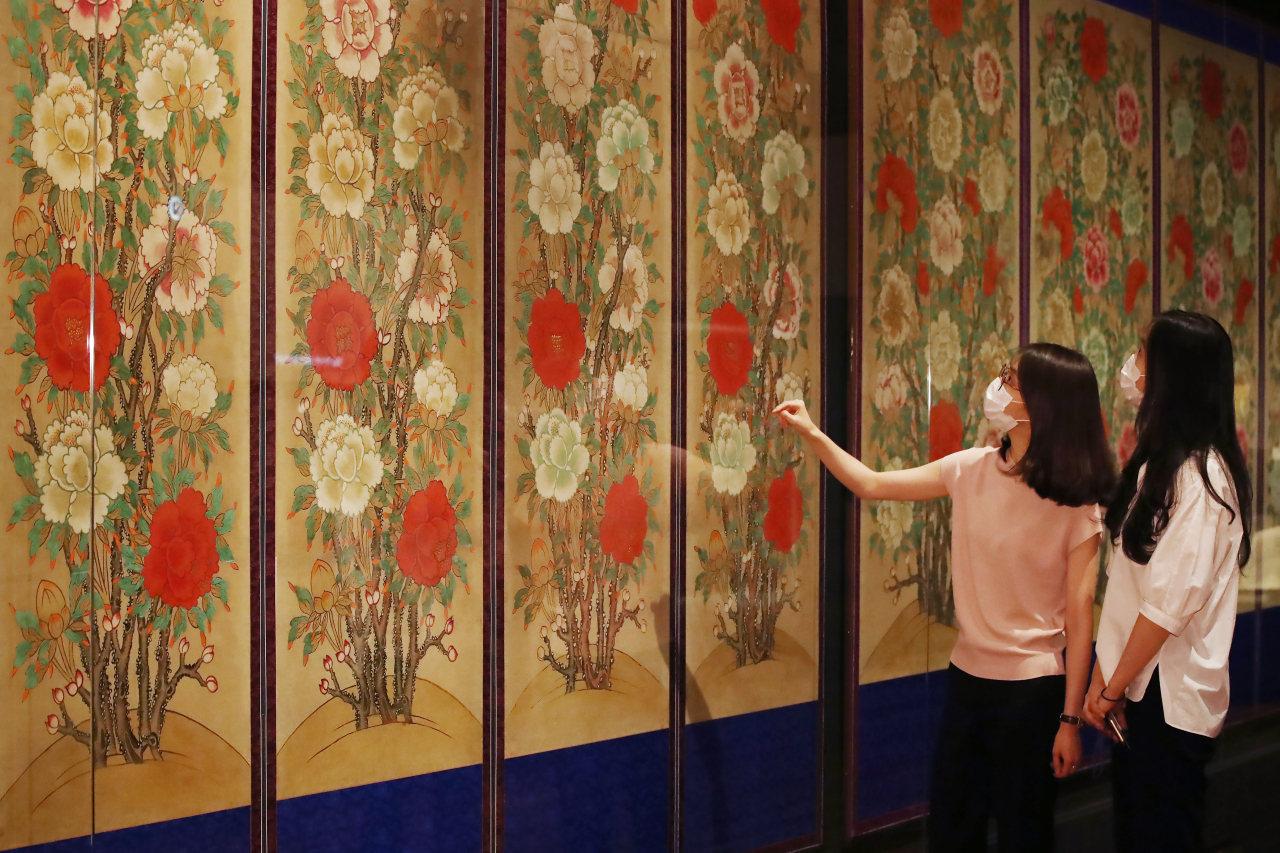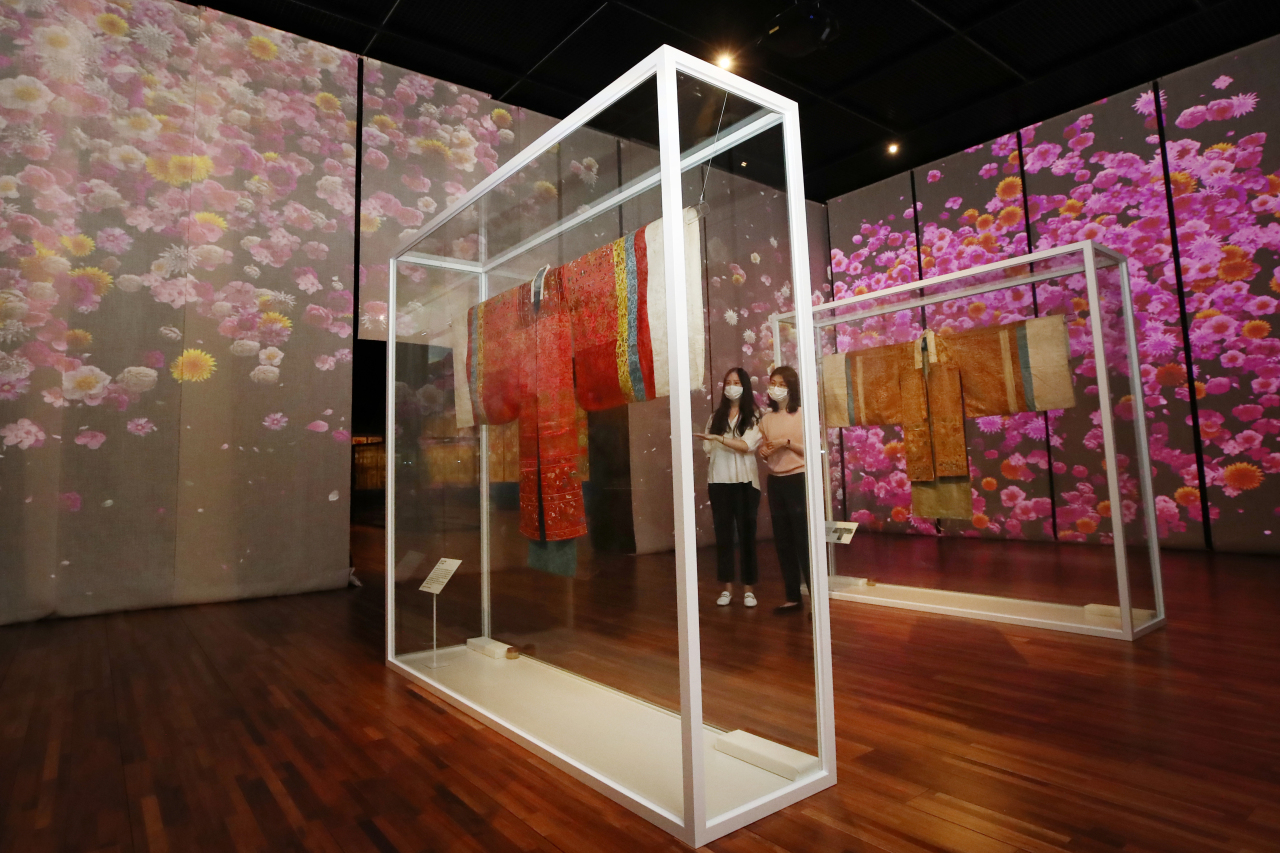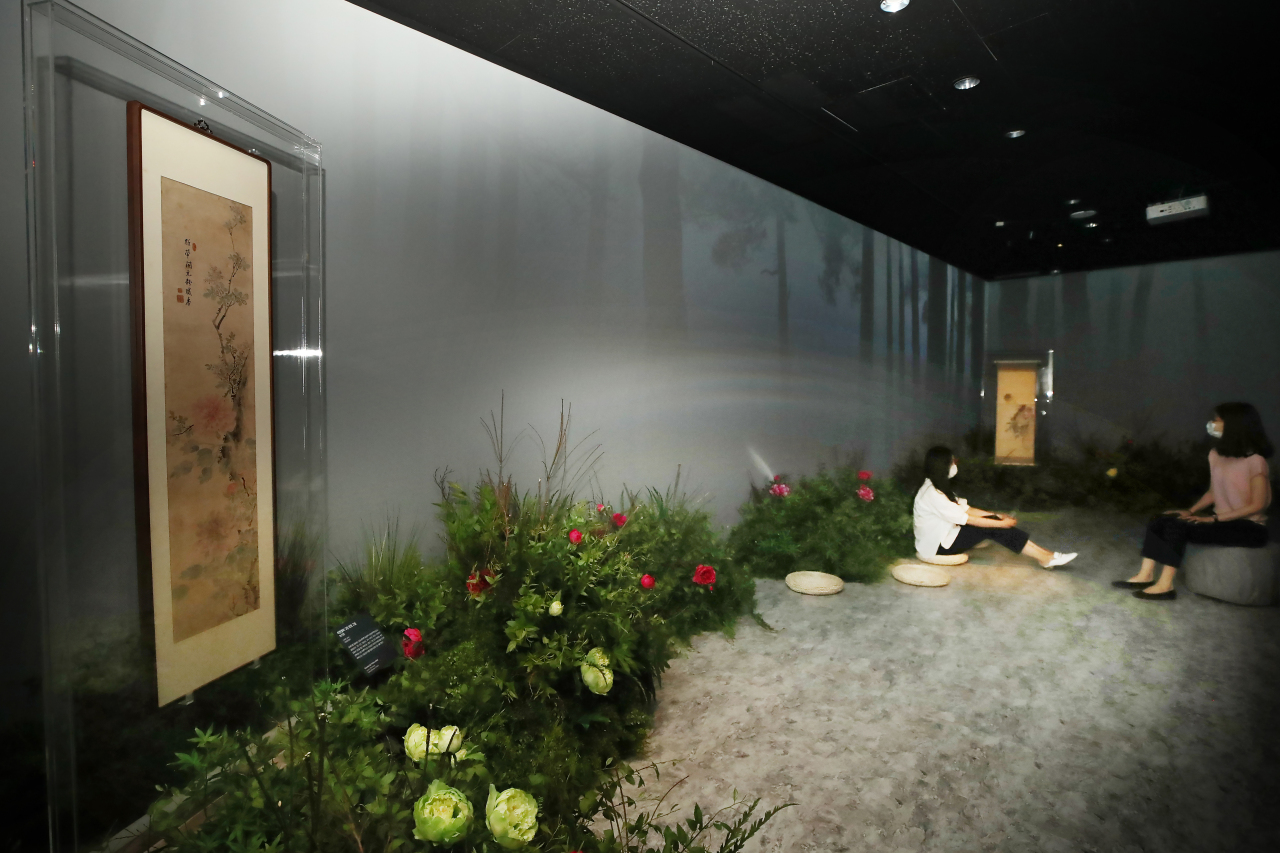 |
Visitors look at huge folding screens decorated with peonies that were used for funerals. (Yonhap) |
A light breeze fills the hall with the scent of peonies. In the background, rain falls and birds chirp.
The first part of the National Palace Museum of Korea’s special exhibition “Peonies: Flowers of Peace and Prosperity” brings visitors immediately to this peaceful garden.
 |
Royal wedding robes decorated with peonies are on display at the National Palace Museum of Korea as part of the exhibition “Peonies: Flowers of Peace and Prosperity.” (Yonhap) |
“The audience will feel like they are at a resting space inside the palace instead of an exhibition hall. They will enjoy the gentle scent while walking in nature. The exhibition will be refreshing for people who are exhausted from COVID-19,” National Palace Museum Director Kim Dong-young said during a press conference held Tuesday ahead of the exhibition’s opening. The exhibition, which displays 120 relics related to peonies, runs from Wednesday to Oct. 31.
The show is divided into three sections: “Growing and Enjoying Peonies,” “Blooming Peonies in Designs” and “Peonies Embodying Wishes for a Peaceful Royal Court and a Prosperous Dynasty.”
In the “Growing and Enjoying Peonies” section, some representative works from 18th- and 19th-century artists such Heo Ryeon (1808-1892) and Nam Gye-u (1811-1890) are displayed along with the flowers.
After passing the garden, scented like the fresh peonies that bloom in Changdeokgung, visitors will reach the second section, where various objects bearing peony designs are on show. They include white porcelain jars, and boxes and furniture inlaid with mother-of-pearl.
National Palace Museum of Korea curator Kim Jae-eun explained that the Joseon royal court used peonies to symbolize wealth and honor.
Kim highlighted two royal wedding robes, called “hwarot,” both decorated with peonies.
 |
Visitors sit in a garden with peonies and peony paintings. (Yonhap) |
One was worn by Princess Bokon (1818-1832), the second daughter of King Sunjo, on her wedding day.
“This is the only hwarot for which we are able to identify the wearer and the date when it was made,” Kim said.
The other hwarot is a traditional piece from Changdeokgung.
“In the process of preserving the dress, we found out that paper was put inside to shape the gown. And the paper they used was found to have been a test paper of a civil service exam held in 1880,” the curator added.
The last part of the exhibition shows how peonies were used in funerals and rituals to honor the ancestors in the royal court. The hall is surrounded by huge folding screens that were used at funerals -- each is around 3 meters tall and 4-5 meters wide and features peony designs.
“The fact that they were also used for royal funerals was interesting for us as well,” the curator said. “They were used to pray for the prosperity and well-being of the royal family throughout the entire process of the funeral ceremony.”
By Song Seung-hyun (
ssh@heraldcorp.com)








![[Herald Interview] 'Trump will use tariffs as first line of defense for American manufacturing'](http://res.heraldm.com/phpwas/restmb_idxmake.php?idx=644&simg=/content/image/2024/11/26/20241126050017_0.jpg)
![[Exclusive] Hyundai Mobis eyes closer ties with BYD](http://res.heraldm.com/phpwas/restmb_idxmake.php?idx=644&simg=/content/image/2024/11/25/20241125050044_0.jpg)
